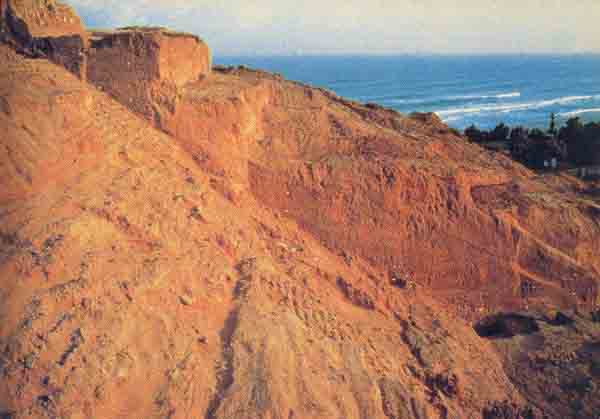Image Details

Carl Andrews, Leon Levy Expedition
Mudbrick towers protected Ashkelon’s 10,000–12,000 inhabitants along a mile-and-a-half arc. The Philistine city’s defenses consisted of as many as 50 towers, evenly spaced along a mudbrick fortification wall built on top of artificial ramparts—made of a thick sheath of sand, soil and debris—surrounding the city. These earthen ramparts, known as glacis construction, were originally built by Canaanites in about 2000 B.C.E.; they were then rebuilt in Iron Age II (1000–586 B.C.E.) by the Philistines, when these towers were also constructed.
